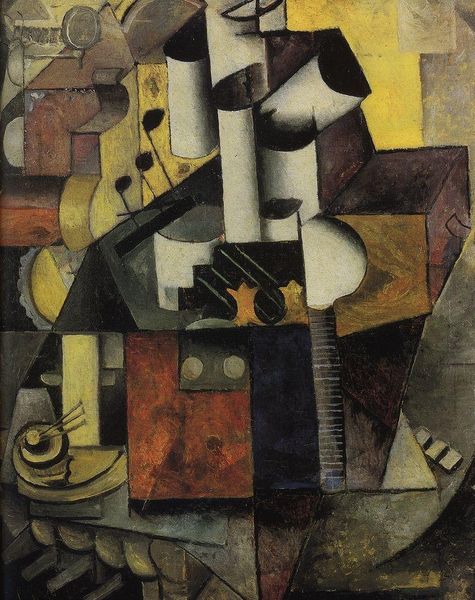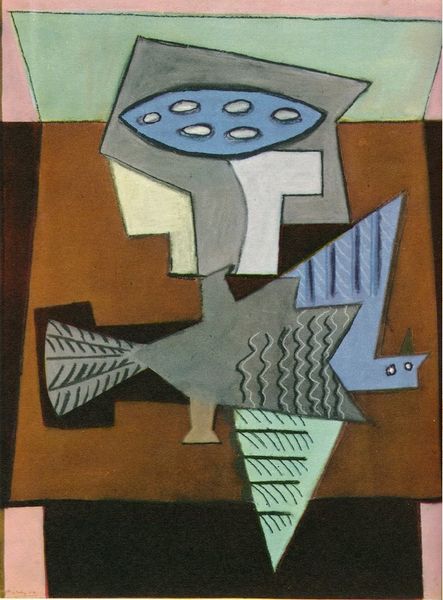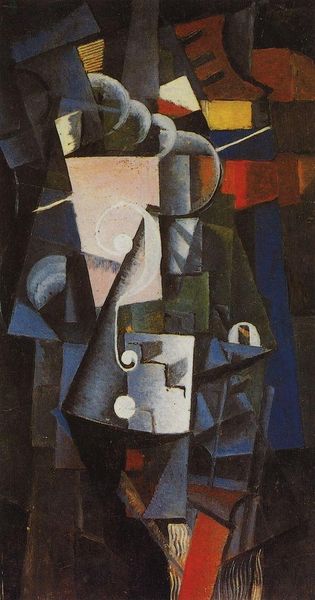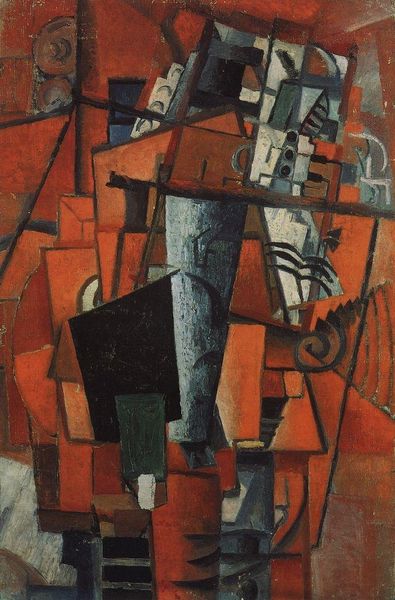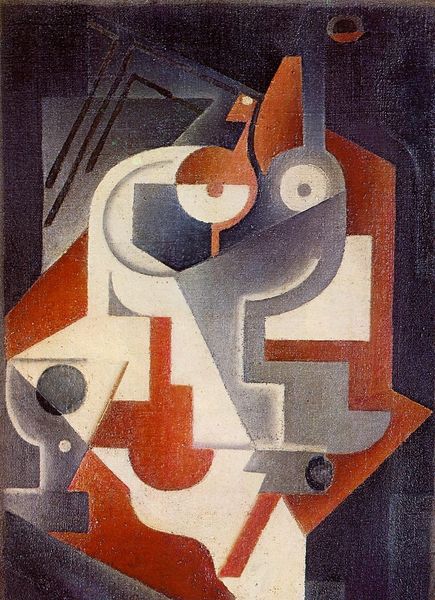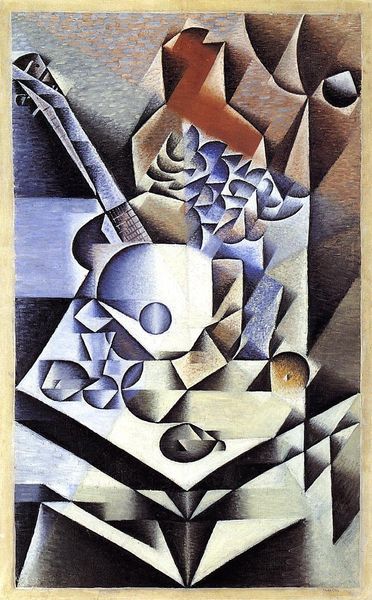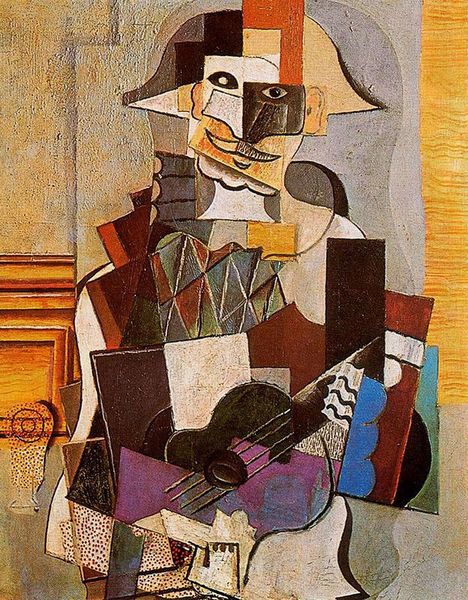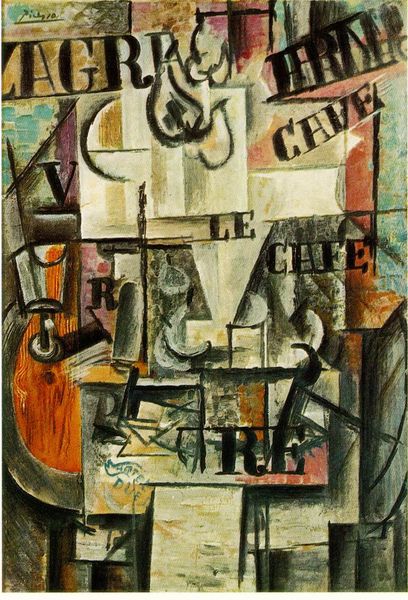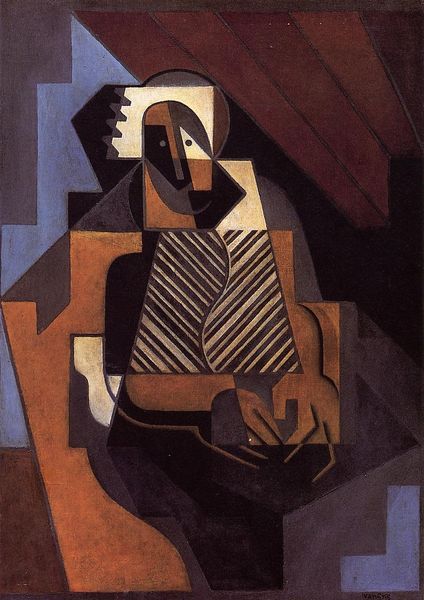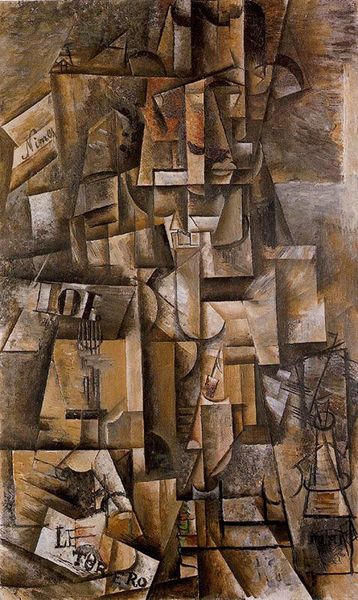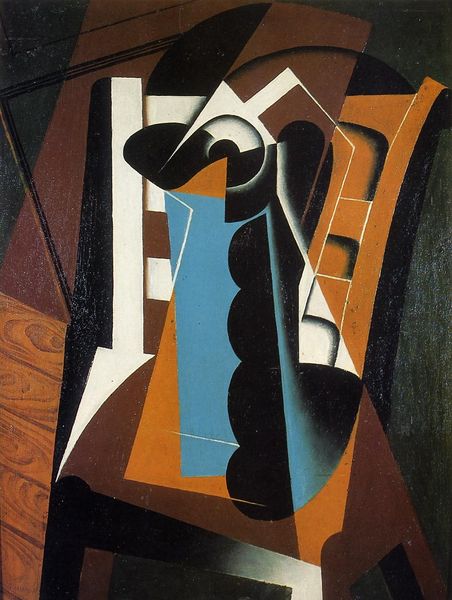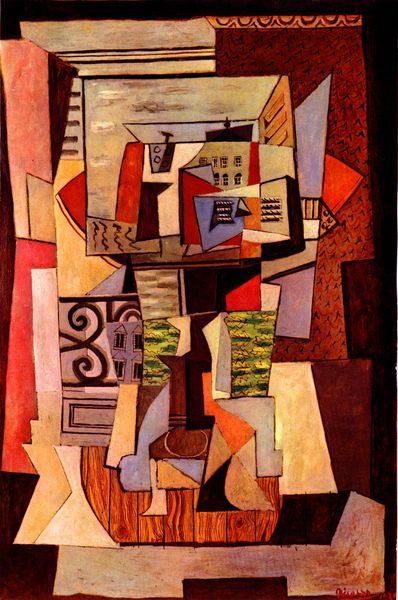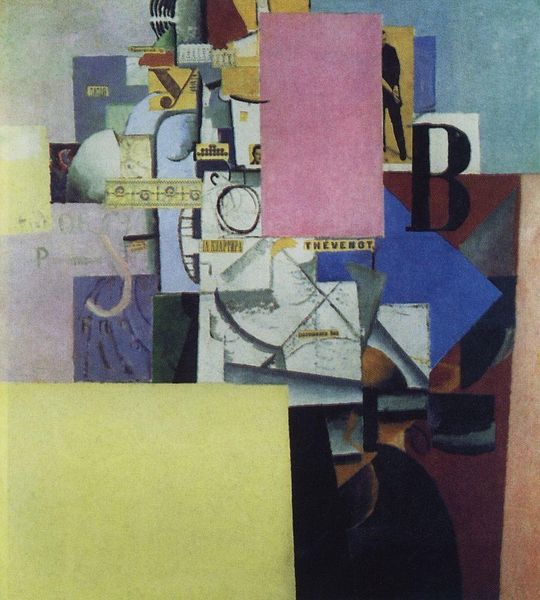
painting, oil-paint
#
cubism
#
abstract painting
#
painting
#
oil-paint
#
geometric
#
painting art
Dimensions: 115.9 x 65 cm
Copyright: Public domain US
Curator: Before us is Pablo Picasso's "The Table," painted in 1919. It’s an oil on canvas, currently held in a private collection. What strikes you immediately about this cubist still life? Editor: Well, beyond the obvious geometric fragmentation, there's a muted, almost melancholic atmosphere. The blues and browns, combined with the sharp angles, create a feeling of… broken serenity. Is that odd? Curator: Not at all. Note how Picasso deconstructs not just form, but also our perception of materials. Look at how he renders wood grain. It’s not about illusion; it’s about presenting the idea of wood, challenging our engagement with everyday objects. It’s about labor – from the tree to the mill to the making. Editor: And the fractured imagery does invite layered interpretation. That cluster of shapes near the top—could that represent bottles, perhaps evoking shared meals, companionship, memories connected to shared nourishment? Or maybe music—see the "HAKIRO" letters? Are those parts of song lyrics or a cafe’s name, echoing leisure or bohemia? Curator: Precisely. The letters would relate back to Picasso's own experiences of place. Consider the significance of oil paint as a medium too. The choice represents not just availability but also the ongoing history of oil painting. His approach is deeply rooted in this lineage. Editor: The way the shapes fit is unsettling in some way – the lack of cohesion or maybe a cohesion we haven't learned to process just yet, because of his fragmentation, creates a really disquieting sensory impact. This table isn't a domestic comfort. It’s alienating in its way. Curator: Alienation is, indeed, one potential experience. In this fracturing of familiar objects, Picasso urges us to reconsider the constructed nature of reality itself. It prompts examination of societal relationships that form artistic endeavors. It all brings out a sense of mass industrialisation, doesn't it? Editor: Yes, a feeling of being dismantled is hard to dismiss. Even from something as fundamental as a tabletop, cultural anxieties can surge in abstraction. It really is profound, how visual symbols reflect a certain memory and mood! Curator: Indeed, understanding its production expands how it engages history itself. Editor: I will never think about a table the same way! Curator: Or its inherent implications of structure and labour, indeed.
Comments
No comments
Be the first to comment and join the conversation on the ultimate creative platform.
